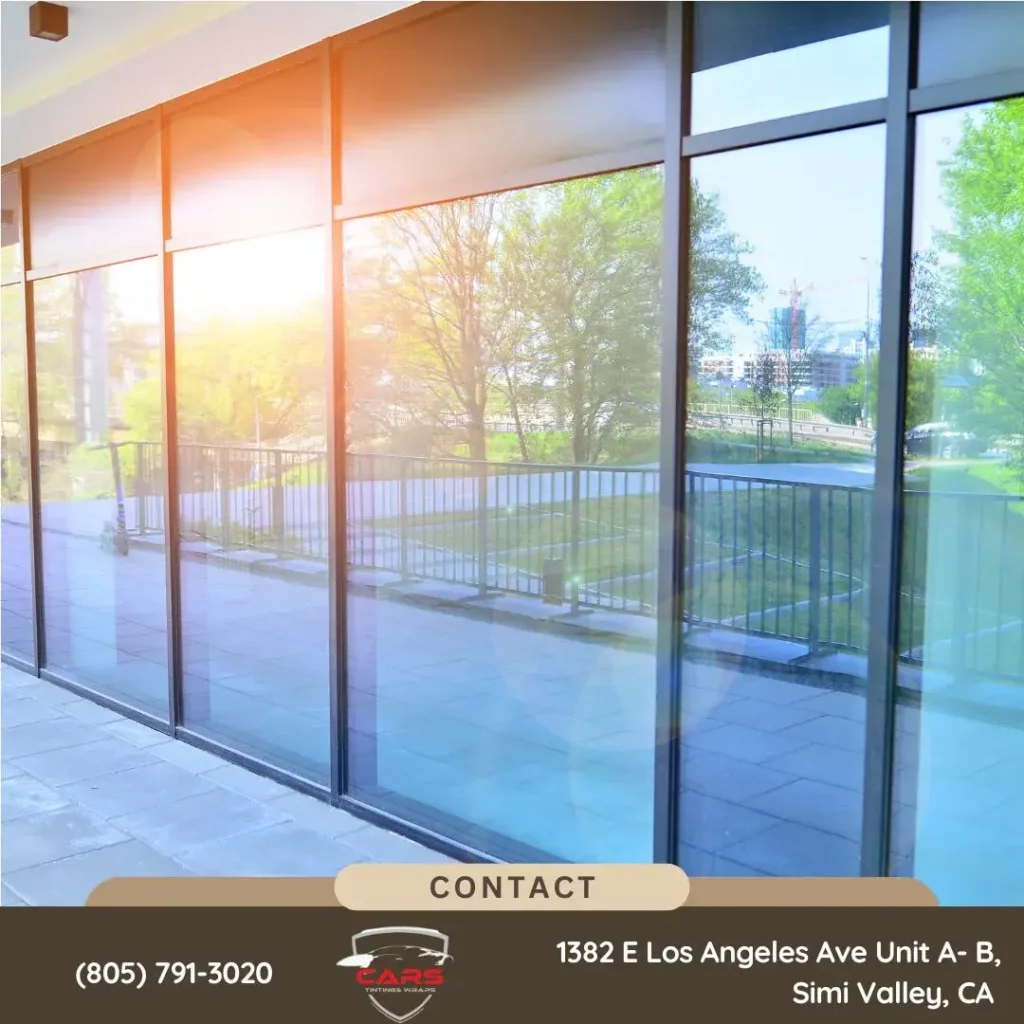
Commercial tinting solutions significantly enhance energy efficiency in buildings by reducing solar heat gain, with advanced window films capable of rejecting up to 79% of solar energy. This decreases reliance on HVAC systems, thereby lowering operational costs and creating a comfortable indoor climate. High-performance tints also diminish glare, alleviating visual discomfort and boosting productivity. Moreover, these films block up to 99% of harmful UV rays, safeguarding both occupants and furnishings. Security is also improved as certain tints hold shattered glass in place, deterring break-ins and enhancing safety. To explore the full range of benefits and best selections, delve into the details.
Benefits of Commercial Tinting
Commercial tinting offers a variety of benefits that can greatly improve the functionality and efficiency of business environments. Primarily, it enhances energy efficiency by reducing solar heat gain. Advanced window films can reject up to 79% of solar energy, thereby minimizing the reliance on HVAC systems. This translates to reduced operational costs and a more comfortable indoor climate.
Additionally, commercial tinting plays a crucial role in glare reduction. Excessive glare can compromise productivity and lead to visual discomfort. High-performance window tints mitigate this issue by filtering out harsh sunlight, ensuring ideal light levels conducive to a productive work environment.
Furthermore, commercial tinting enhances UV protection by blocking up to 99% of harmful ultraviolet rays. This not only protects occupants but also extends the lifespan of interior furnishings and equipment by preventing sun-induced fading and degradation.
Security is another important benefit. Certain types of window films are designed to hold shattered glass in place, providing an additional layer of protection against break-ins, vandalism, and accidents.
Lastly, tinting solutions contribute to aesthetic appeal by offering a sleek, uniform appearance to the building’s exterior, reinforcing a professional image that aligns with corporate branding strategies.
Choosing the Right Tint
Choosing the right tint for a commercial property necessitates a thorough understanding of various factors to achieve peak performance and compliance with industry standards. Key considerations include Visible Light Transmission (VLT), Solar Heat Gain Coefficient (SHGC), and Ultraviolet (UV) rejection rates.
VLT measures the amount of visible light passing through the window, influencing both interior lighting and glare reduction. SHGC assesses the fraction of solar radiation admitted through the window, directly impacting HVAC load and energy efficiency. Higher UV rejection rates protect interior furnishings and occupants from harmful UV rays, extending the lifespan of materials and promoting occupant health.
Moreover, the type of glass substrate, existing glazing systems, and local building codes must be taken into account. Dual-pane windows, for instance, may necessitate spectrally selective films to uphold thermal insulation properties while enhancing solar control.
Industry certifications, such as those from the International Window Film Association (IWFA) and National Fenestration Rating Council (NFRC), ensure that selected tints meet rigorous performance criteria.
Collaboration with certified tinting professionals who grasp the intricacies of these variables guarantees that the chosen tint optimizes energy efficiency, enhances occupant comfort, and complies with all regulatory requirements, thereby fostering a sense of belonging within the professional community.
To wrap up, commercial tinting solutions offer significant benefits, including enhanced energy efficiency, reduced glare, and improved occupant comfort. By carefully selecting the appropriate tint based on factors such as building orientation, climate, and specific needs, businesses can optimize their energy usage and operational costs. What better way to enhance a building’s performance while contributing to environmental sustainability? Implementing strategic tinting provides a practical, cost-effective approach to achieving these goals in the commercial sector.